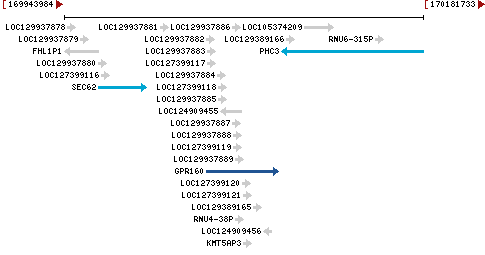- Exon count:
- 6
| Annotation release |
Status |
Assembly |
Chr
|
Location |
| RS_2023_10 |
current |
GRCh38.p14 (GCF_000001405.40) |
3 |
NC_000003.12 (170037995..170085392) |
| RS_2023_10 |
current |
T2T-CHM13v2.0 (GCF_009914755.1) |
3 |
NC_060927.1 (172822662..172870058) |
| 105.20220307 |
previous assembly |
GRCh37.p13 (GCF_000001405.25) |
3 |
NC_000003.11 (169755783..169803180) |
Chromosome 3 - NC_000003.12